MechanoEngineering: Now Open for Submissions

Focus and Coverage | Editorial Policies | Editorial Team | Subscribe to our Newsletter

Focus and Coverage
MechanoEngineering is a diamond open access journal dedicated to promoting and disseminating original research at the intersection of mechanics and emerging technologies in the digital-AI era. Recognizing the profound contributions of mechanics to human advancement over millennia, this journal seeks to revitalize the field by fostering innovation through the integration of cutting-edge digital and AI technologies.
In this era of AI, computational science, and global networking, MechanoEngineering aims to reclaim and reimagine the pivotal role of mechanics in addressing modern engineering challenges, accelerated in particular by the mechanical inspiration from cell structures in biology to data flow in the infinite virtual world.
The journal encourages interdisciplinary and pioneering research inspired by mechanics, particularly in fields where mechanics intersects with new technologies, such as digital systems, sensors, wireless networks, healthcare, space exploration, green energy, and environmental sustainability. Topics of interest include, but are not limited to:
- Coupled multi-physics and multi-field phenomena, including mechanical, thermal, electrical, magnetic, and optical interactions.
- Applications of mechanics in emerging fields such as MEMS, semiconductors, bio-inspired designs, ultralight porous structures, cells and tissues, and electronic devices.
- Novel uses of mechanics in intelligent systems, digital miniaturization, data flow processing, and multifunctional materials.
- Innovative methodologies for designing, validating, manufacturing, assembling, and rehabilitating materials and structures.
- Contributions to healthcare, biology, information technology, energy, transportation, climate change, communication systems and the like driven by mechanics.
MechanoEngineering differentiates itself from traditional mechanics journals by focusing on interdisciplinary research that bridges classical theories of mechanics with new applications in mechanical, thermal, electrical, electronic, optical, biological, and functional systems. The journal prioritizes studies involving the coupling of structural and functional materials, reflecting the evolution of mechanics into new frontiers.
MechanoEngineering seeks to become a leading venue for advancing mechanics research and showcasing its propelling applications, serving as a vital link between foundational science and transformative technologies in the digital-AI era.
Editorial Policies
Criteria for Publication
To be published in MechanoEngineering, an article must have the potential to influence thinking in the field and should make a fundamental discovery or represent a significant advancement in understanding of an existing problem. Moreover, it must meet several general criteria:
Validity: The paper must provide strong evidence for its conclusions, and the data must be technically verified.
Novelty: The paper must report original scientific research that was not previously published elsewhere.
Interest: The paper must be important to researchers in its specific field and be of interest to a broader readership.
Clarity: The paper must be organized in a reasonable and cohesive manner.
Format & Content
For more detailed instructions on how to prepare your manuscript, visit this page: Author Instructions.
MechanoEngineering (MEG) will publish the following article types:
Articles contain novel and significant findings relevant to many researchers in the field. The timeliness, relevance of the research, and clarity of presentation are important factors that we consider when evaluating Article submissions. Articles should include sufficient experimental information to allow other researchers to reproduce the reported results. Authors may include supplementary material, including video or other multimedia files.
Reviews are succinct overviews that provide historical background and detail recent progress in topics covered by the journal’s scope. Reviews should be written in a way that enhances or introduces the work to researchers in the field.
Perspectives cover emerging topics or highlight a recent scientific discovery and/or industry direction. The provide a forward-looking discussion on the direction of particular sub-field. Perspectives differ from Reviews in that they can present personal viewpoints from leaders in the field.
Comments and Responses address scientific issues within articles published in the journal. Researchers considering a Comment are encouraged to directly contact the authors of the original article first, as comments will be published only if the same result cannot be achieved through publication of either an Erratum or a new article. We discourage Comments on questions of priority or calling attention to an oversight in a reference list.
Generally, the authors of the original article will be invited to submit a Response to the Comment, and the Comment and Response will be peer reviewed together. If the Comment and Response are both accepted, the will appear in the same journal issue.
No further exchange beyond this point will be considered for publication.
Comments and Responses should be no longer than roughly 1,000 words.
Errata are corrections of errors in previously published papers. These may be errors introduced in the publication process by the author or the publisher, or errors in the research that were discovered after the paper was published. Errata should be confined to specific errors. Further discussion or additional work that either confirms or denies previous work should be presented as a separate Article or Comment.
Manuscript Length: There is no length limit in this journal; however, manuscripts should be concise and present a clear description of the research for reproducibility.
Peer Review Procedure
Submitted manuscripts are initially screened by the Editor-in-Chief. If the manuscript appears to be suitable for the journal, it will be assigned to an Associate Editor who has the appropriate scientific expertise to determine whether to send the manuscript to be peer reviewed. The editors may seek informal advice from members of the Advisory Board. The goal is to assess early if the manuscript should be sent for formal review. Those papers judged by the editors to be of insufficient general interest, or otherwise inappropriate, are rejected promptly without external review. At this stage, editors also evaluate the possible suitability of the manuscript for other journals in the AIP Publishing portfolio and may recommend the paper for one of these journals.
Manuscripts that pass the initial assessment are sent for formal review. Typically, two independent referees are carefully selected from the worldwide research community and MEG relies on single-blind peer-review. The Editorial team welcomes authors’ suggestions or appropriate reviewers and gives serious consideration to requests that a manuscript not be sent to a particular reviewer. In both cases, we regard these suggestions as recommendations only.
The referees comment critically on the validity and importance of the paper and provide their opinion concerning the novelty, impact, and interest to the readers. Referee reports are intended to advise the editors. We necessary, the editors may contact the referee of a paper for follow-up advice. The editors will reconcile all advice to reach a decision. The decision is sent to the author along with the comments for the authors.
Authors are invited to take the referees’ criticisms seriously. When invited to resubmit, authors should make every attempt to address all criticisms presented to them.
The editors will not reveal the referees’ identities to authors or to other referees, conversely, referees will refrain from identifying themselves to the authors. Referees must treat the review process and all material related as strictly confidential. Referees may seek the opinion and consult with colleagues but should inform the editors first to preserve the integrity of the review process. When seeking these external opinions, the referee should first consider possible conflict of interests. The editors also ask that referees report their own conflict of interest.
Open Access Statement
MechanoEngineering (MEG) is an open access journal. Articles published in MEG are freely accessible, without restriction, to the global public. Although MEG is an open access journal, authors are not responsible for any publication charges. Authors who publish in MEG retain the copyright to their work under a Creative Commons license. Under this license, users are free to share and adapt the material in any format, provided appropriate credit is given. Visit the AIP Publishing Open Access Policy for more information about our policies on open access.
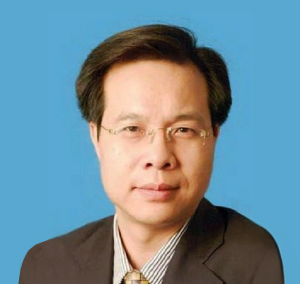
Editor-in-Chief
Prof. Tian Jian Lu
Nanjing University of Aeronautics and Astronautics
Professor TJ Lu obtained his PhD in Engineering Sciences from Harvard University. Prior to his current position at Nanjing University of Aeronautics and Astronautics (NUAA), he served as Lecturer, Reader, and Professor of Materials Engineering in the Engineering Department at Cambridge University from 1996 to 2006. He also held the role of Vice President for Research and International Affairs at Xi’an Jiaotong University (XJTU) from 2004 to 2018. During his tenure at Cambridge, he was a Professorial Fellow and Director of Studies in Engineering at Queens’ College; while at XJTU, he was the founding President of Chongshi College. Currently, Professor Lu is the founding Director of the MIIT Key Laboratory for Multifunctional Lightweight Materials and Structures, as well as serving as the Leading Scientist at the State Key Laboratory of Mechanics and Control for Aerospace Structures—both affiliated with NUAA.
Professor Lu employs theoretical, experimental, and numerical methodologies to explore various research frontiers within engineering sciences. His work addresses challenges related to materials mechanics, noise and vibration control, heat transfer phenomena, and biomechanics. Presently, his research focuses on developing design principles for ultralight compact multifunctional load-bearing MetaStructures while establishing bio-thermo-electro-mechanics pertaining to brain tissue. He has authored over 20 books and book chapters along with more than 700 peer-reviewed international journal articles. Additionally, he holds over 100 patents with total citations exceeding 40,000 according to Google Scholar data; his h-index stands at an impressive 95. From 2005 to 2015, Professor Lu acted as Chief Scientist for China’s National Basic Research Program (973 Project). He has received numerous prestigious awards including the National Natural Science Award of China in 2015 and the Young Chinese Scientist Award in 2006.
Prof. Lu has delivered keynote and invited speeches at more than 50 international conferences and has organized or co-organized over 30 conferences and workshops. He served as Vice President of the Chinese Society of Theoretical and Applied Mechanics (CSTAM). Representing China, Prof. Lu holds significant roles within the International Union of Theoretical and Applied Mechanics (IUTAM), including membership in the General Assembly, Congress Committee (CC), Congress Committee Nominations Subcommittee, and Symposium Panel (SP).
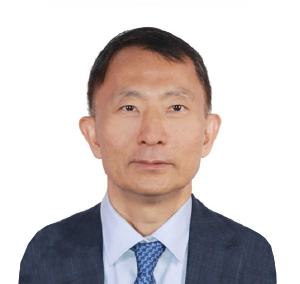
Co Editor-in-Chief
Prof. Huajian Gao
Tsinghua University
Professor Huajian Gao is currently the Xinghua University Professor and Director of the Mechano-X Institute at Tsinghua University. He also holds the title of Walter H. Annenberg Professor Emeritus of Engineering at Brown University. Professor Gao earned his B.S. in Engineering Mechanics from Xi’an Jiaotong University in 1982, followed by his M.S. and Ph.D. in Engineering Science from Harvard University in 1984 and 1988, respectively. He began his academic career at Stanford University, where he served on the faculty from 1988 to 2002, achieving tenure as an Associate Professor in 1994 and advancing to Full Professor in 2000.
Throughout his distinguished career, Professor Gao has held several prestigious positions, including Director at the Max Planck Institute for Metals Research (2001–2006), Walter H. Annenberg Professor of Engineering at Brown University (2006–2019), and Distinguished University Professor at Nanyang Technological University (2006–2024).
His research focuses on uncovering the fundamental principles that govern the mechanical properties of materials in both engineering and biological systems. Professor Gao’s contributions have been widely recognized through numerous accolades, including his election as a Fellow of the Royal Society and memberships in the U.S. National Academy of Sciences, the U.S. National Academy of Engineering, the American Academy of Arts and Sciences, the German National Academy of Sciences Leopoldina, the Chinese Academy of Sciences, and Academia Europaea. He has also been honored with the Rodney Hill Prize, the Timoshenko Medal, and the ASME Medal, which represent the highest lifetime achievement awards in his field.
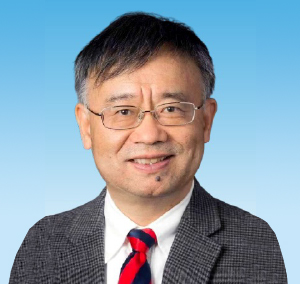
Associate Editor-in-Chief
Prof. Ji Wang
Ningbo UniversityProfessor Ji Wang has been Qianjiang Chair Professor of Zhejiang Province at Ningbo University since 2002. From 2013 to 2019, he also served as the Associate Dean for Research and Graduate Studies in the School of Mechanical Engineering and Mechanics. He is the founding director of the Piezoelectric Device Laboratory, which has been recognized as a Key Laboratory by the Municipality of Ningbo. Before his academic career, Professor Wang worked as a senior engineer at SaRonix in Menlo Park, California from 2001 to 2002; as a senior engineer and manager at NetFront Communications in Sunnyvale, California from 1999 to 2001; and as a senior member of technical staff at Epson Palo Alto Laboratory in Palo Alto, California from 1995 to 1999. Additionally, he has held visiting positions at Chiba University, the University of Nebraska-Lincoln, and Argonne National Laboratory. He earned his PhD and Master’s degrees from Princeton University in 1996 and 1993 respectively after obtaining his bachelor’s degree from Gansu University of Technology in 1983.
Professor Wang’s research primarily focuses on acoustic waves and high-frequency vibrations within elastic and piezoelectric solids for resonator design and analysis. He serves on various boards as a member or advisor for academic journals, professional and technical organizations, and industrial companies in his professional career.
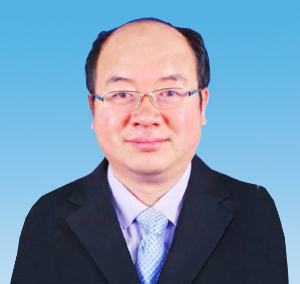
Associate Editor-in-Chief
Prof. Lifeng Wang
Nanjing University of Aeronautics and AstronauticsProfessor Wang Lifeng is the Associate Dean of the College of Aerospace Engineering at Nanjing University of Aeronautics and Astronautics, as well as Deputy Director of the State Key Laboratory of Mechanics and Control for Aerospace Structures. He holds several prominent academic and professional roles, including Standing Council Member and Director of the Division of Dynamic Load Identification and Dynamics Design of the Chinese Society of Vibration Engineering, and Council Member of the Chinese Society of Theoretical and Applied Mechanics.
Dr. Wang earned his Ph.D. from Nanjing University of Aeronautics and Astronautics in 2005. His research expertise spans the dynamics of nanoscale systems, aerospace structural dynamics, and wave propagation in solids.
Throughout his distinguished career, Dr. Wang has received many prominent awards and honors, including the National Excellent Doctoral Dissertation Award (2009), the Second Prize of the National Natural Science Award (2012), the National Science Fund for Excellent Young Scholars (2015), the Young Scholar of the Chang Jiang Scholars Program (2015), and the National Natural Science Fund for Distinguished Young Scholars of China (2019). In addition to his academic achievements, Dr. Wang has served as a deputy to both the 13th and 14th National People’s Congress of China.
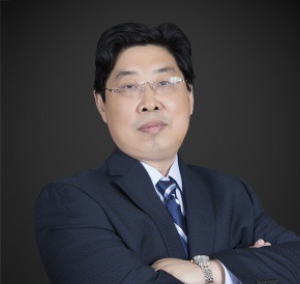
Associate Editor-in-Chief
Prof. Cunfa Gao
Nanjing University of Aeronautics and AstronauticsProfessor Cunfa Gao, currently serving as the Executive Director of the State Key Laboratory of Mechanics and Control for Aerospace Structures, has held the position of Chair Professor of Mechanics at Nanjing University of Aeronautics and Astronautics (NUAA) since 2005. He was the Dean of the School of Aerospace Engineering at NUAA from 2019 to 2022. Prior to his tenure at NUAA, he was a JSPS Fellow at Shizuoka University in Japan from 2003 to 2005; a visiting professor at Hong Kong University from 2002 to 2003; a Humboldt Foundation Fellow at Dresden University of Technology in Germany from 2000 to 2002; and a postdoctoral fellow at Peking University in China from 1998 to 2000. He obtained his PhD degree from NUAA in 1998. Professor Gao’s research primarily focuses on the mechanics of electromagnetic solids, with extensive investigations into the mechanical behavior and fracture theory of smart materials. Additionally, he serves as Vice President of Jiangsu Society of Theoretical and Applied Mechanics.
An editorial committee of over 30 distinguished researchers from major academic institutions around world is established to support major fields and directions of the journal. The journal will be led by distinguished academics and researchers from the major fields of Theoretical and Applied Mechanics with the editorial office at NUAA, China.
Subscribe to our Newsletter
ISSN: 3066-9502 | E-ISSN: 3066-9510 | CODEN: MECHCP
